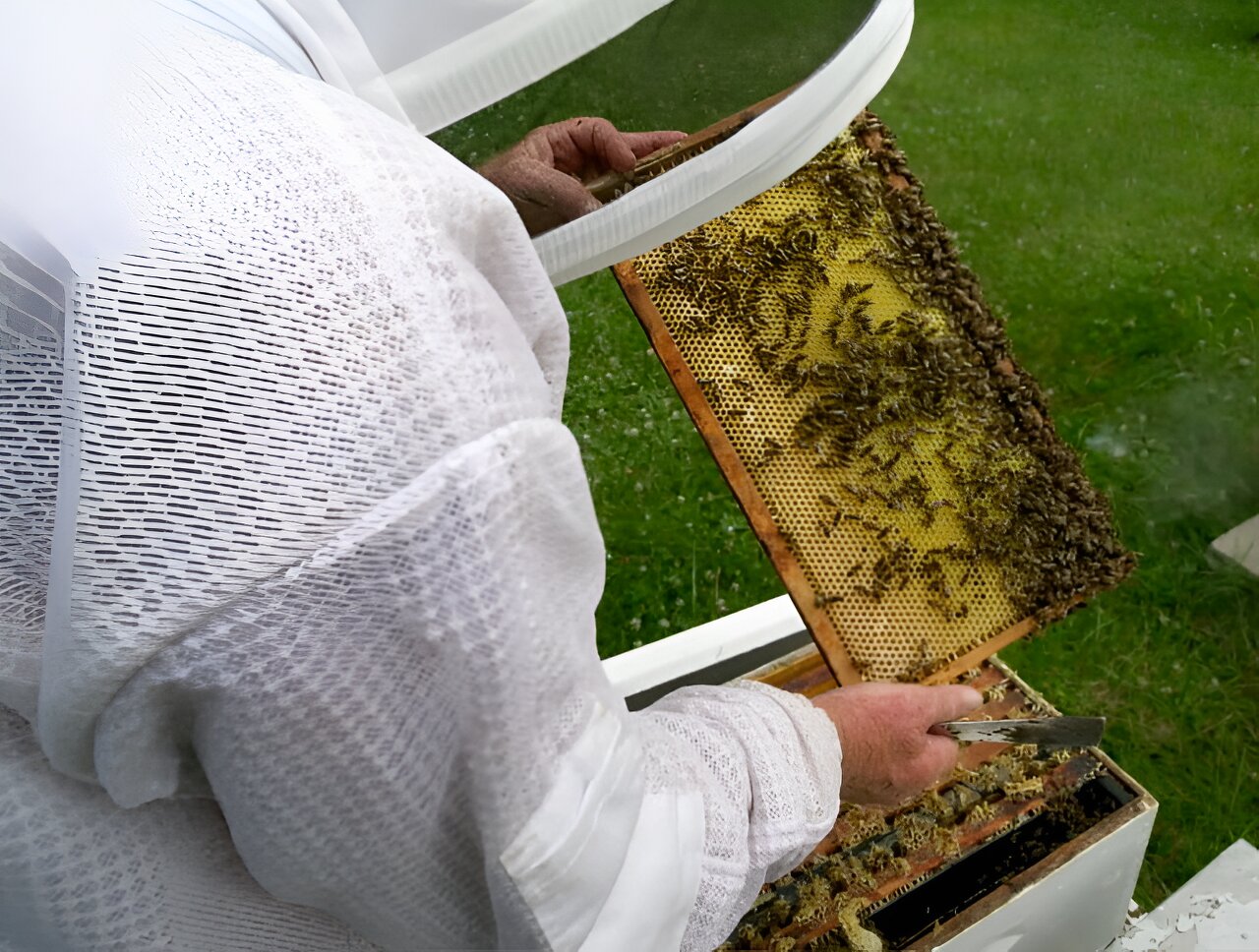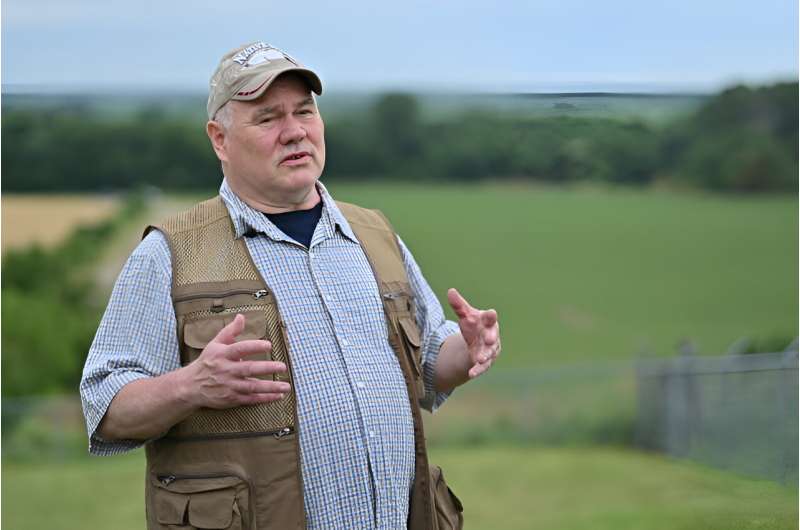Kansas
Bill to set aside $17.9 million for Kansas conservation efforts backed by Senator
:quality(85)/cloudfront-us-east-1.images.arcpublishing.com/gray/W7UTQFMPQRD7FNFDJTDNRILWAU.jpg)
TOPEKA, Kan. (WIBW) – A bill that would set aside $17.9 million yearly for conservation efforts in Kansas has been backed by U.S. Senator Jerry Moran.
The Kansas Wildlife Federation announced on Wednesday, May 10, that U.S. Senator Jerry Moran (R-Kan.) has signed onto a new bipartisan wildlife conservation bill that would direct $1.4 billion to locally-led efforts to help at-risk species each year.
“Too many Kansas wildlife species are experiencing steep declines. This bill will allow us to restore habitat and address the problem at the scale necessary, in collaboration with volunteering landowners,” said Brad Loveless, Secretary of Kansas Wildlife and Parks. “We thank Senator Moran for cosponsoring collaborative conservation efforts that will benefit our wildlife and our way of life.”
KWF noted that the Recovering America’s Wildlife Act would send $17.9 million to the Kansas Department of Wildlife and Parks which will be used to implement the State Wildlife Action Plan which identifies 285 priority species – including the Lesser Prairie-Chicken, Neosho Madtom, Swift Fox and Southern Plains Bumble Bee.
“Saving the thousands of at-risk wildlife species will require bold, bipartisan leadership,” said Collin O’Mara, president and CEO of the National Wildlife Federation. “We are so grateful to Senator Moran for leading the way on the historic Recovering America’s Wildlife Act. This bill will have an immediate impact – saving species, creating jobs and protecting our way of life in Kansas and all across the country.”
The organization said federally recognized tribal nations, including the Prairie Band Potawatomi Nation and Kansas Kickapoo Tribe, would share $97.5 million to fund wildlife conservation efforts each year on tribal lands.
“The Kansas Wildlife Federation is excited for Senator Moran to engage in this bipartisan process. The Recovering America’s Wildlife Act is a once-in-a-generation opportunity to do something great for wildlife and we thank our legislator for being part of the important work on behalf of all Kansans,” said Jeff Seim, board president of the Kansas Wildlife Federation.
Officials indicated a similar bill was passed in the House on a bipartisan vote in the 2022 session with support from Rep. Sharice Davids (D-KS). Moran also cosponsored a senate version last session which passed out of committee but never received a floor vote despite 47 bipartisan cosponsors on the bill.
Copyright 2023 WIBW. All rights reserved.

Kansas
Brown v. Board 70 years later: Kansas school leaders say the work to create racial equity in schools continues

KANSAS CITY, Mo. (KCTV) – Friday is the 70th anniversary of the 1954 Brown v. Board of Education case that ruled segregation in schools unconstitutional. It forever changed the face of public education and Kansas schools say today the work continues to make students of all races feel equally supported.
“When I think about it being only 70 years, that’s not a long time,” said former Shawnee Mission Public Schools DEI coordinator Dr. Tyrone Bates.
As local educational leaders throughout the Kansas City area explain, progress toward racial equality in schools hasn’t always been linear.
“The Supreme Court justice’s opinion was not that schools should be segregated because it was the right thing to do but rather African Americans were inept, they were not qualified to teach students of color,” said Bates.
Kansas City, Kansas, Public Schools officials say looking back at the past 70 years, its schools have become more diverse. Currently, its student population is 60 percent Hispanic, 30 percent black, and multiracial.
“I believe that all of our students need access to dual language programs, multilingual resources, resources outside of their community to help support the community,” said KCKPS diversity, equity, and inclusion executive director Dr. Canise Salinas-Willich.
The district’s Diversity, Equity, and Inclusion department works with other departments to create programs and policies that are inclusive for all students. Students have also been given the chance to share their personal experiences and give feedback that can create real change in the district.
“Our investment in our students is evident as we invest in their voices and we invest in making sure that we bring quality education, quality work into the classroom,” said Salinas-Willich.
Meanwhile, Dr. Bates now works in consulting but during his tenure with SMSD, he established equity practitioners. These are staff members who learn how to support each building in the district. He also established employee resource groups that support staff members who are part of marginalized groups.
“I’m proud of the fact that many administrators were doing whatever they could to break down barriers and bridges between students of different backgrounds,” said Bates.
Last year, a black student at Shawnee Mission East High School was called a racial slur by another student and attacked. Bates explains how this is an example of how racism still exists in schools and communities.
“There’s still work to be done around understanding racial equity, understanding racial justice. There’s a tremendous difference between the two. Racial equity is about improving outcomes. Racial justice is about breaking down hierarchies so we don’t have glass ceilings for people who are not in economic power,” he said.
Copyright 2024 KCTV. All rights reserved.
Kansas
To save their soil, Kansas tribe shifts to regenerative agriculture—and transforms their farms

When one of the elders in the Iowa Tribe of Kansas and Nebraska asked if he could keep bees on the reservation, Tim Rhodd’s answer was straightforward: “Absolutely.”
Soon, the bees started buzzing in the alfalfa fields. Then they started pollinating.
Then they all died.
“Once we started looking into it, we found there was a chemical (class) called neonicotinoid that caused the death of these bees,” said Rhodd, the tribe’s chairperson. “That was the very, very first part of what I had seen that we were doing things wrong.”
Facing the reality that their soil was contaminated—and the realization that the same harmful insecticides that killed the bees would be bad for them, too—the Ioway started questioning their farming practices.
After receiving a grant in 2019, the tribe switched its farming operations from monocropping—growing one plant in the same soil, year after year—to regenerative agriculture, a process designed to promote biodiversity and soil health by minimizing disturbances and maintaining living roots as much as possible.
By caring for a rotation of diverse crops throughout the year—rather than controlling the soil year-round for just one seasonal crop—farmers eliminate the need for herbicides and pesticides.
Moving away from monocropping is as much a challenge to standard practice as it is a physical feat. The so-called Green Revolution in the 1960s changed industrial farming to address food shortages by ushering in the extensive use of fertilizers, herbicides and pesticides. Working to improve the yield of a single crop became the norm, thanks in part to profitability and operational efficiency.
But monocropping has been shown to damage soil health, and farmers’ reliance on pesticides and herbicides can harm pollinators and water supplies while insects and weeds rapidly develop resistance to the chemicals.
“Just monocropping, eventually you use up all of your nutrients,” said Olivia Brien, tribe member and its director of communications. “And what happens is that you run out of the nutrients to grow good food, so then you’d have a desert. It becomes a desert.”
The tribe’s Ioway Farms operation has implemented regenerative practices and indigenous methods across 2,400 acres of row crop production and 2,500 acres of pastureland in rural northeast Kansas, near White Cloud. The tribe runs Ioway Farms along with several other ventures—including a bee farm, a seed company, a hemp farm and an orchard that includes pears, peaches, plums and apples.
The farm generates vital revenue for the tribe and helps the Ioway, also known as the Báxoje, reconnect with their culture—and the land. The tribe found historical evidence that diverse irrigation processes mimicking a more natural system had been in place on the land within the past 200 years.

“Holism is about everything being parts of the whole,” said Lance Foster, tribal historic preservation officer and former vice chair of the tribe. “You cannot have health without the land. You cannot have good food without the land. The Ioway don’t have a word for wilderness, because to us, it wasn’t wild. It was our home.”
The tribe also started practicing adaptive multi-paddock grazing, a system of managing livestock to mimic the constantly moving herds that once roamed the prairies so that their grazing patterns encourage more biodiversity in the soil.
“Once we have our healthy soils, we’ll be able to have healthy plants, healthy animals, healthy humans,” Rhodd said.
That includes the bees. A 2019 study in the journal Global Change Biology found the United States is among the countries where the increasing number of pollinator-dependent crops—such as soybean—has far outpaced the diversity of crops that bloom at different times, giving bees a year-round habitat.
At Ioway Farms, flowering plants line the border of crops.
“Nature hates one crop; it hates a monoculture,” said Eric Fuchs, a consultant with Understanding Ag, a regenerative agriculture consulting company that works with the tribe to implement regenerative practices.
“So, we want to see diversity. A lot of the fields, we’ll have pollinator strips around the edge, and we’ll have multi-species cover crops planted. There is living root in the soil at all times. There will always be something when you come to the Iowa tribe that will be green.”
The decision to move away from monocropping was an easy one, tribal leaders say, even if the work involved has been difficult. The Ioway believe making their land more diverse and productive year-round is the key to solving challenges from sustainability to food security to soil health.
“There are a lot of different definitions of regenerative,” Fuchs said. “From my perspective, it’s leaving things better than they started out. A lot of things in agriculture over the last 100 years or more, it seems like it’s a ‘take, take, take’ agriculture. We do things … that actually improve the soil for future generations.”
They’re seeing signs of success already. Improvements in the quality of the tribe’s soybean yield have paved the way for valuable business with tofu producers, for example.
“We’re actually developing new markets that we’ve never had before,” Rhodd said. “I’m very proud to say that the farm team has had 100% food production across all of our acres. That’s been one of our goals, and we met that goal.”
In the fall, Ioway farmers harvest the crop they planted the previous year and follow directly behind the combine harvester with a seeder, planting cover crops such as rye, along with turnip or radish. The cover crops grow through the winter, and in the spring, the Ioway flatten them to keep the ground temperature lower, control weeds and provide nutrients for the next layer of soybean or corn.
“It makes you feel pretty good when you’re driving around in December and stuff is green—not dead,” said Kyle Rhodd, the manager of Ioway Farms and brother of the tribe’s chairperson. “It’s pretty amazing to see.”
Kyle said the move to regenerative agriculture has been transformational for the tribe. And it’s changed the way he sees the soil.
“I honestly didn’t look at the soil as a living thing,” Kyle said. “I just looked at it as dirt. Going along on this journey, it makes you realize there is so much more than just dirt on the ground. … There are living organisms down there that are getting taken away from all the chemicals being used.
“With a biology in the soil, making that all mesh—it’s already there. Why do that synthetically when you can let nature take its course?”
The Ioway have seen the benefits of caring for the soil in the quality of their produce.
“After one year of regenerative principles, the Ioway came back and said their tofu beans had a better, nuttier flavor and yielded better,” Fuchs said.
“What we’re seeing is what’s happening in the soil—healthy soil, healthy plants, healthy animals, healthy food. … We have seen changes that impact all over the country. The way we grow food—the health of our food, the nutrient density of our food—it’s a broken system.
“This type of agriculture is a learning curve, but it can be done.”
A review of research, published in 2017 in the journal Nutrition Reviews, found diversifying crops may improve diets and nutrition outcomes in people living in low- and middle-income countries.
The Ioway believe that’s what regenerative agriculture will do for them. They say providing fresh, nutrient-rich produce for local tribal members and neighbors in their rural area of northeast Kansas—where access to healthy food is limited—will help them take ownership of their own health and reconnect to their land.
“All of us are indigenous to somewhere,” Brien said. “All of our ancestors understood that you have to live in balance, and we aren’t currently living in balance. That change is going to be difficult, but it’s for the best. It’s wonderful. It’s a beautiful thing.”
Provided by
American Heart Association
Citation:
To save their soil, Kansas tribe shifts to regenerative agriculture—and transforms their farms (2024, May 17)
retrieved 17 May 2024
from https://phys.org/news/2024-05-soil-kansas-tribe-shifts-regenerative.html
This document is subject to copyright. Apart from any fair dealing for the purpose of private study or research, no
part may be reproduced without the written permission. The content is provided for information purposes only.
Kansas
Fantastic Friday across Kansas

WICHITA, Kan. (KWCH) – Meteorologist Jake Dunne says aside from some patchy fog, it is a quiet Friday morning with wake-up temperatures in the 50s. Mainly sunny skies will lead us to a warmer afternoon as temperatures top-out in the lower 80s.
Expect even warmer (hotter?) conditions on Saturday as highs climb into the upper 80s and lower 90s. A weak cold front will sweep across Kansas on Saturday night, and while few, if any showers or storms are expected with its passage, temperatures will trend cooler on Sunday.
The frontal boundary will stall, or slowly move north setting the stage for showers and storms to erupt on Sunday. While the exact timing is uncertain, some of the storms will (most likely) be severe, producing large hail and damaging wind.
Looking ahead… the boundary may linger around the state on Monday, possibly producing another round of showers and storms before moving south on Tuesday ending the storm chances and ushering in cooler temperatures.
WICHITA AREA FORECAST:
Today: Mostly sunny and warmer. Wind: W/S 5-10. High: 82.
Tonight: Becoming clear. Wind: S 5-10. Low: 60.
Tomorrow: Mostly sunny and hot. Wind: S 5-15. High: 90.
Sun: Low: 63. High: 88. Partly cloudy; afternoon/evening storms.
Mon: Low: 65. High: 90. Partly cloudy and hot.
Tue: Low: 67. High: 79. Partly cloudy, breezy, and cooler.
Wed: Low: 55. High: 76. Mostly sunny.
Thu: Low: 58. High: 79. Partly cloudy; afternoon/evening storm chances.
Copyright 2024 KWCH. All rights reserved. To report a correction or typo, please email news@kwch.com
-

 Politics1 week ago
Politics1 week agoRFK Jr said a worm ate part of his brain and died in his head
-

 World1 week ago
World1 week agoPentagon chief confirms US pause on weapons shipment to Israel
-

 World1 week ago
World1 week agoConvicted MEP's expense claims must be published: EU court
-

 News1 week ago
News1 week agoStudents and civil rights groups blast police response to campus protests
-

 Politics1 week ago
Politics1 week agoCalifornia Gov Gavin Newsom roasted over video promoting state's ‘record’ tourism: ‘Smoke and mirrors’
-

 Politics1 week ago
Politics1 week agoOhio AG defends letter warning 'woke' masked anti-Israel protesters they face prison time: 'We have a society'
-

 News1 week ago
News1 week agoNine Things We Learned From TikTok’s Lawsuit Against The US Government
-

 Politics1 week ago
Politics1 week agoBiden’s decision to pull Israel weapons shipment kept quiet until after Holocaust remembrance address: report



















